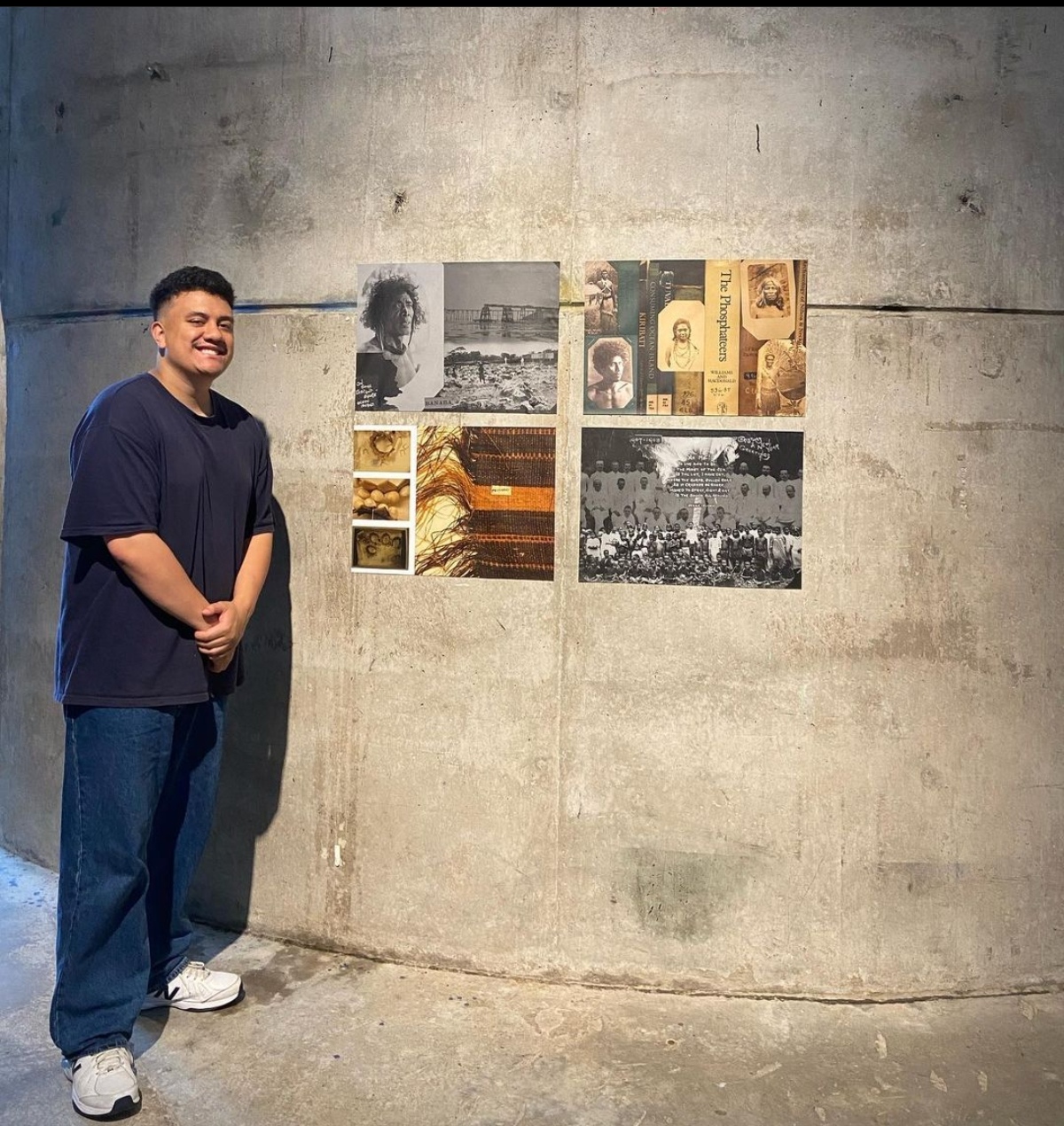Related News

Banaban artist Vaitoa Mallon. Picture: SUPPLIED
By SIMRAN CHAND
AN art exhibition in New Zealand has reaped positive accolades from the Banaban community and supporters for its depiction of the forced relocation of Banabans from their homeland to Rabi Island.
The exhibition features traditional crafts, photographs and video content by Banaban artists and visionaries. The project was founded and implemented by the International Center for Advocates Against Discrimination (ICAAD), the Banaban Women’s Organization (BWO), and the Banaban community in Auckland and Rabi.
ICAAD director and change facilitator Erin Thomas said the forced relocation of Banabans from Banaba to Rabi Island in the mid-20th Century was due to the extensive mining of phosphate deposits on the island by foreign companies.
“We are thrilled to be supporting the Banaban community with this exhibit. The arts are a powerful tool for building solidarity and raising awareness,” Ms Thomas said.
“It is our hope that this collaboration leads to more global awareness about the issues facing the Banaban community on Rabi and across the diaspora, which in turn translates to more support as they advocate for their rights.”
The relocation of the Banaban people had a significant impact on their way of life. They had to adapt to a new environment and learn new ways of living.
They also had to cope with the loss of their traditional homeland, which was deeply rooted in their cultural identity.
Vaitoa Mallon, a Banaban artist and cocurator residing in Wellington, New Zealand, expressed his emotions and insights on his art piece and the ongoing exhibition.
“As a Banaban and Micronesian, I belong to one of the smaller Pacific demographics in Aotearoa, where we are often positioned on the margins. This motivates me and gives me more reason to express and represent my heritage at any chance possible. I have to acknowledge my Banaban heritage because it helps to ensurethat our story is not forgotten,” Mallon said.
Being involved in the art exhibition, he said, was a humbling experience and thanked ICAAD for their contribution.
ICAAD and the Banaban community have listed recommendations to protect the human rights of Banabans. Among these are recommending that the Kiribati Government act immediately to ensure that basic food stocks and safe drinking water are available in Banaba; the Government of Fiji should create a Department for Minor Ethnic Communities; and that both the Kiribati and Fiji authorities should ensure Banabans dual citizenship.
The organisation is urging the general public to assist them in increasing awareness by sharing the Banaban story online with the hashtag #JusticeforRabi. The exhibit intends to establish a platform for reform by increasing visibility.